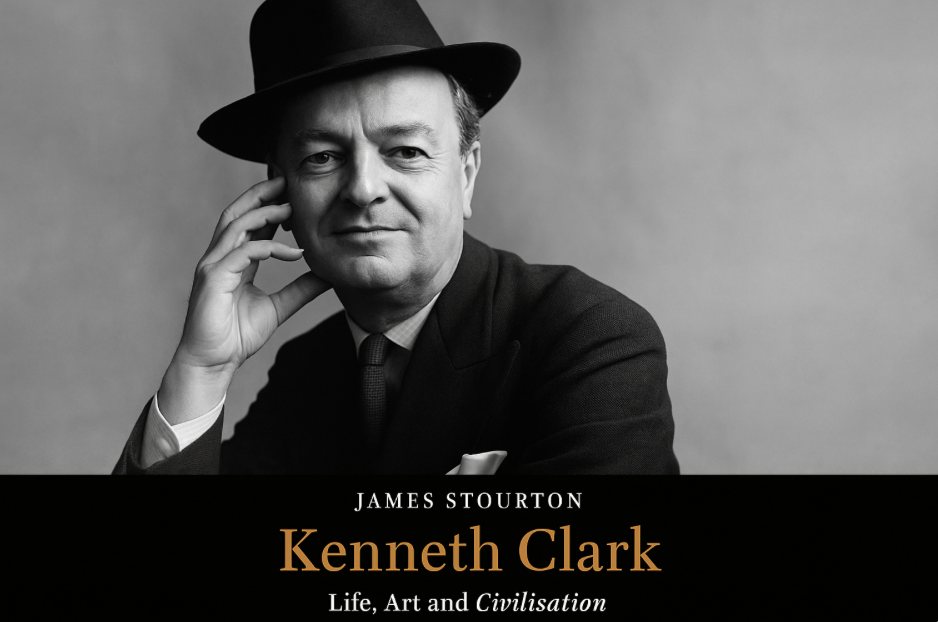

What follows is a book review I wrote shortly after completion of doctoral work which was published in the Journal of Faith and the Academy 10, no. 2 (Fall 2017): 104.
Book Review
Kenneth Clark: Life, Art, and Civilisation. James Stourton. New York: Knopf, 2016. xvii + 478 pp. $35.00.
James Stourton has written the authorized biography of art historian Kenneth Clark. Stourton read the history of art at Cambridge University. He joined Sotheby’s in 1979. After years at Sotheby’s, he left his position as UK Chairman of the company. This Clark biography is a unique find for the lover of art history, a treasure for students of leading protagonists of the development of art, especially in Great Britain, and a contribution to the scholarly debate of art.
This work informs the reader of the history of art in Britain from its earliest form as it emerged on the broader stage. Stourton considers Clark to have been a man with a keen eye for history who applied this focus to the field of art history. Through his detailed letters, Clark’s pen enlightens much of Stourton’s work. Stourton remarks that Clark was “too busy to put art into them [letters], but even the briefest will contain a striking phrase; he was incapable of writing a dull sentence” (xvi). Stourton presents a life lived in passion for all that he embarked upon whether art, travel, or leisure. Much of his life’s work focused on art that was deeply theological, yet Clark was not considered to be a religious man. The work begins with Clark’s early years growing up in an Edwardian childhood, his days in private school, education at Oxford, and his time with Bernard Berenson. Clark accepted the post at the National Art Gallery against the wishes of Bernard Berenson. In this move, Clark set his career in motion. Stourton describes a prescient decision by Clark to move Britain’s most treasured art from London to a safe location during World War II due to concern that bombs would destroy these great works of art. Clark created opportunities for the artist to paint the war in pictures. Clark set off on a journey to the writing and lecturing stage which led to his famous work The Nude: A Study in Ideal Form. He naturally transitioned into television helping to invent independent television. The chapter on “Saltwood: The Private Man” is one of the best chapters of the book as it delves into the intimate side of the man. Near the end of Clark’s active life, he produced “Civilisation” which was destined to become as standard work on the history of civilization.
Stourton gained access to Clark’s personal archives and conversations with his family members. His personal letters in correspondence with Janet Stone who was his mistress for many years have been held at Bodleian Library at Oxford University with a thirty-year moratorium. Stourton had access to portions of these private letters. According to Stourton, the volume of information preserved in letters is a wealth of information to fuel future investigation of his life and achievements. Clark’s memoirs and the work of Robert Cumming entitled “My Dear BB” have all provided greater insight into the life of Kenneth Clark. Stourton work is likely the most relevant documented resource of Clark’s life to date.
The work reads much like a novel having the feel of a page turner while maintaining the presence of a well-researched biographical study. Stourton dedicates a significant portion of his work to Clark’s life in the presence of others such as presentations in galleries, lectures to art students, war-time agendas to protect delicate art, and his work on the history of civilization. Much of the biographical narrative draws on the personal letters of Clark to dignitaries of state, art experts, wealthy donors, and pledging his love to his growing list of romantic dalliances. However, even though Stourton wrote Clark, the private man, the work was left wanting for more of the man himself. Stourton’s work is a worthwhile read and highly recommended.

